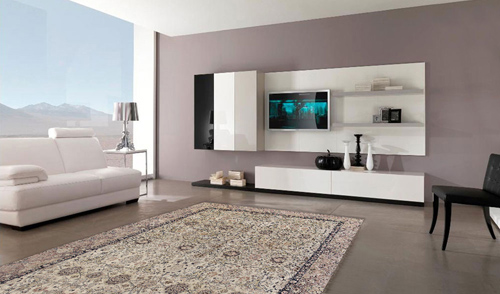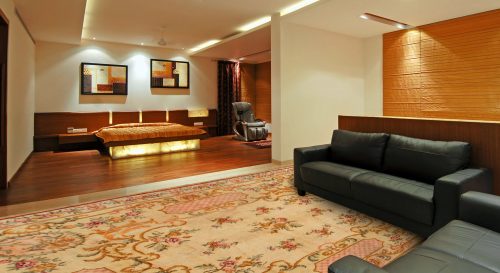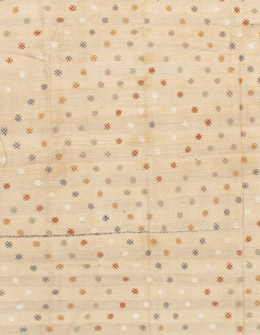Archives: Rug Styles
TABRIZ RUGS

TRADITIONAL STYLE TABRIZ PERSIAN RUGS Tabriz means many things to rug enthusiasts: classical antique Persian carpets of the 16th century now in museums, decorative medallion carpets from the 19th century popular with designers worldwide, fine quality silk rugs as much wall hangings as floor coverings, and medium-priced goods for the middle market. The Persian carpet revival began in Tabriz around 1870 and Tabriz carpet merchants were instrumental in the renaissance of the craft throughout Iran. Because Tabriz has always been an important Persian industrial center. Tabriz carpets are always regularly woven, well drawn and evenly dyed. There are no loose
SUZANI TEXTILES

ORIENTALIST EXOTICISM IN SUZANI TEXTILES ‘Sus’ is the Persian word for ‘needle’ and thus a Suzani is a rug or textile created by needlework. More precisely it refers to the exceptionally colorful Uzbek silk embroidered textiles on linen, cotton or silk grounds. They are always essentially floral with extraordinary varieties of flowers, rosettes, buds, vines, birds and medallions. They are terrific wall hangings, totally authentic and ethnic, bringing the exoticism of a Central Asian bazaar into any room. Sizes and formats vary, from under 4’ by 6’ to 10’ by 12’, and there are portiere/prayer layouts. There are numerous distinct
SULTANABAD RUGS

OPULENT AND DECORATIVE ANTIQUE SULTANABAD RUGS In Arak (now Markazi) province in west-central Persia, the town of Sultanabad (and surrounding villages) is justly famous for the light colored, boldly allover patterned large carpets woven in the 1880-1910 period. The British firm of Ziegler was the most important company, adapting the lighter, often unusual, colors and large-scale designs common to antique Turkish Oushaks to more Persianate drawing styles. LIGHT AIRY & EXPANSIVE The resulting rugs are light, airy, expansive and unmistakable. Nothing looks like or can substitute for a Sultanabad. And nothing looks as opulent with high taste furnishings. See also
SOUMAC RUGS

ABSTRACT AND ATTRACTIVE ANTIQUE SOUMAC RUGS The Soumac technique is a form of warp wrapping by pattern wefts which proceed forward over two or more warps and back under fewer warps, giving a flat front surface. Most antique Soumac rugs come from the Caucasus where the technique is employed in carpet sized pieces with classic Caucasian geometric designs. Soumac technique may also be used on bags or as an extra decoration on pile rugs. Soumac carpets are lighter in weight than their pile analogues, but wear surprisingly well and can always be turned over for further use. Small Soumac rugs
JAJIM KILIMS
SOUF RUGS
SOUF TECHNIQUE IN RUGS The Souf technique combines a design in raised (relief) pile with a flatwoven (in any one of several techniques) ground. Silk souf’s, often antique, originate from Kashan, but this high-low effect has been adopted in many modern carpet production regions. Passing one’s hand across a Souf gives a pleasant tactile sensation and one can trace out the design blindfolded. Souf’s are basically wall hangings and are not recommended for floor use. In general, any rug with two heights of pile can be considered a souf.
SIVAS RUGS

BEAUTIFUL ANTIQUE SIVAS TURKISH RUGS Sivas in eastern Anatolia is best known for interpretations in light tones of Persian, especially Tabriz, designs. The pile is usually low and the weaves are medium fine. Antique Turkish Sivas carpets are a reasonably priced alternative to Hereke’s. They are decorative in the best sense, but are actually quite hard to find.
SERAB RUGS

STURDY, SEMI-GEOMETRIC ANTIQUE PERSIAN SERAB RUGS Serab is located on the edge of the Heriz weaving area and specializes in runners. Camel borders are standard on antique Serab rugs. The patterns are geometric, the wool pile is quite dense and more modern rugs tend toward lighter palettes. Few scatters and no room size antique Serab’s were woven. Most Serab runners are 3’4” wide and finding one under three feet across is truly exceptional. Camel border antique Hamadan’s share the same aesthetic with old Serab’s.
SENNEH RUGS

MAGICAL AND MIRACULOUS ANTIQUE SENNEH PERSIAN RUGS From the town of Senha (Sanandaj) in Kurdistan come antique rugs that attain nearly miraculous fineness and suppleness. And they are rugs, almost never room sizes or runners. The texture is unique: a sandpapery back and an incredibly low pile. Antique Persian Senneh rugs are among the most collectible and coveted of Iranian town rugs. The production has always been small and those with silk warps are incredibly rare. The same Kurds who make the most rustic and folky rugs in Persia also weave these amazing pieces of true rug art. Modern Senneh’s
SAVONNERIE RUGS

ELEGANT AND URBANE ANTIQUE FRENCH SAVONNERIE RUGS The French Savonnerie carpet workshop was established under King Louis XlV in the old Parisian soap factory (Savon) to produce carpets of the highest quality for the royal palaces, especially Versailles. The original antique Savonnerie carpets were exuberantly Baroque with swags, cartouches, armorial devices and allegorical figures. These carpets were thick and lush, and often were in enormous sizes and extended series. The factory continued in operation throughout the centuries and other European carpet operations imitated the various styles (neo-classic, Napoleonic Imperial, 19th century Victorian and Belle Époque). SAVONNERIE RUGS FROM OTHER AREAS








